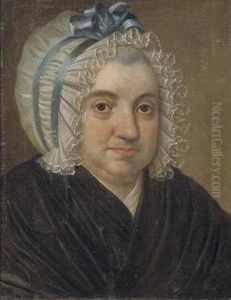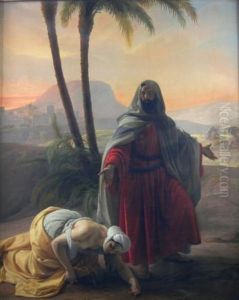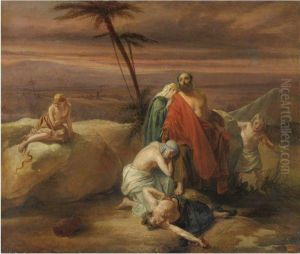Andrea Il Giovane Appiani Paintings
Andrea Appiani, known as Andrea Il Giovane Appiani to distinguish him from his father, was an influential Italian painter born in 1754 in Milan, Lombardy. He is most renowned for his work in the Neoclassical style, which was a significant artistic movement that sought to emulate the art and culture of ancient Greece and Rome. Appiani's contributions to this movement were pivotal in the spread of Neoclassicism across Italy and Europe during the late 18th and early 19th centuries.
Appiani received his early training in Milan but further honed his skills under the guidance of Antonio Canova, a leading sculptor of the time. His talent quickly garnered the attention of the Milanese nobility and, most notably, Napoleon Bonaparte, under whose patronage he became the premier painter of the Napoleonic era in Italy. Appiani's works from this period include frescoes, portraits, and historical subjects that are celebrated for their vivid detail, graceful composition, and vibrant colors.
Throughout his career, Appiani was involved in significant cultural projects and was appointed as the director of the Brera Academy, where he influenced a generation of artists. His frescoes decorate many important buildings in Milan, including the Royal Palace and the church of San Maria presso San Celso, showcasing his mastery of large-scale compositions and his ability to imbue classical subjects with emotional depth and contemporary relevance.
Appiani's legacy extends beyond his artistic contributions; he played a crucial role in the revival of fresco painting in Italy and inspired many followers. Despite the decline in his popularity after his death in 1817, recent scholarship has reevaluated his work, recognizing him as a pivotal figure in the transition from Rococo to Neoclassicism. His paintings are held in high esteem and can be found in museums and collections worldwide, attesting to his enduring influence on the course of Western art.


